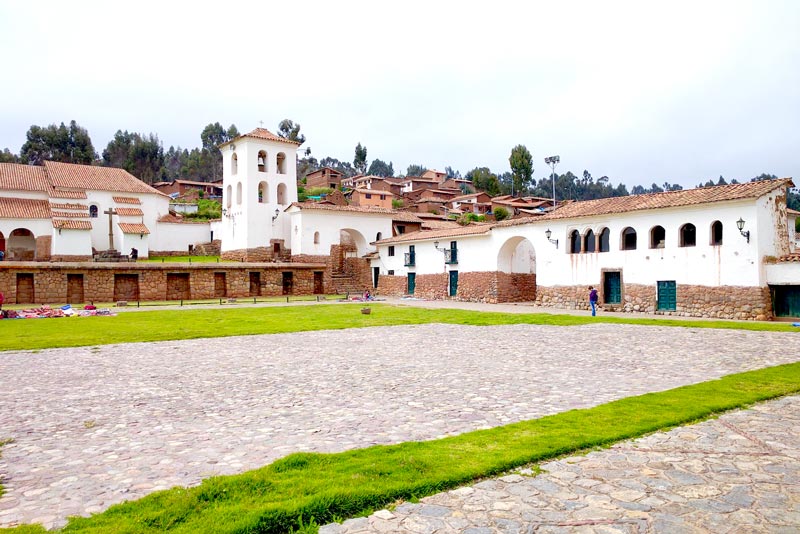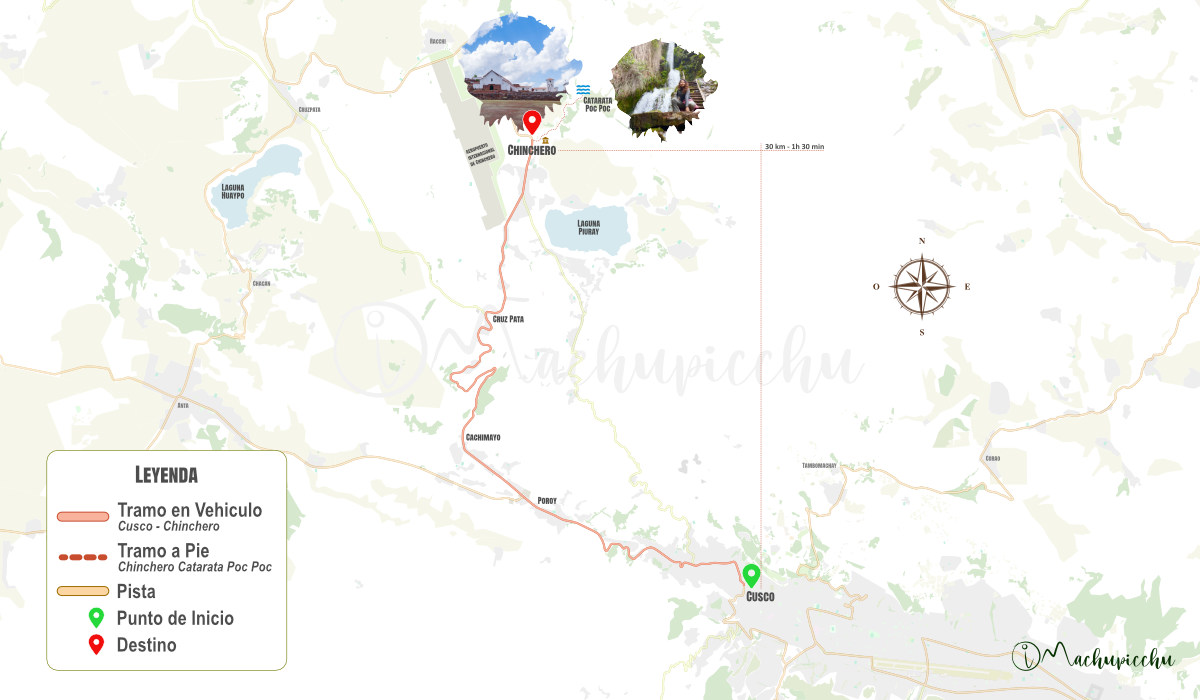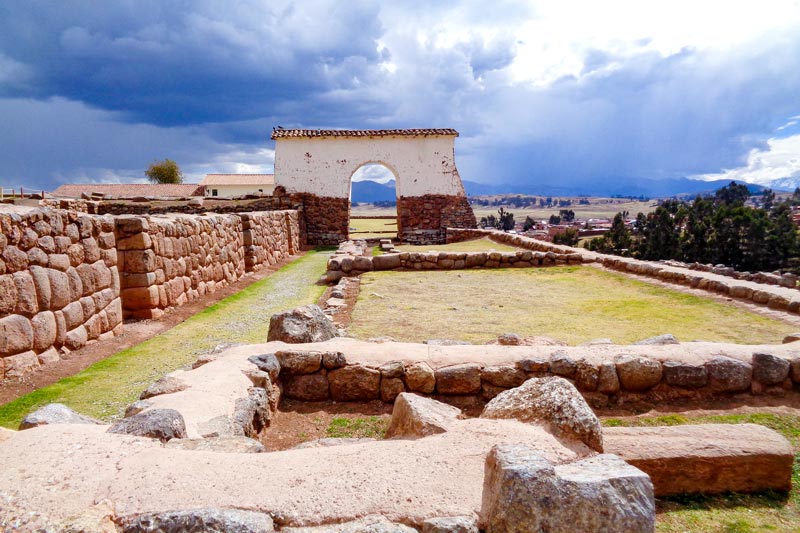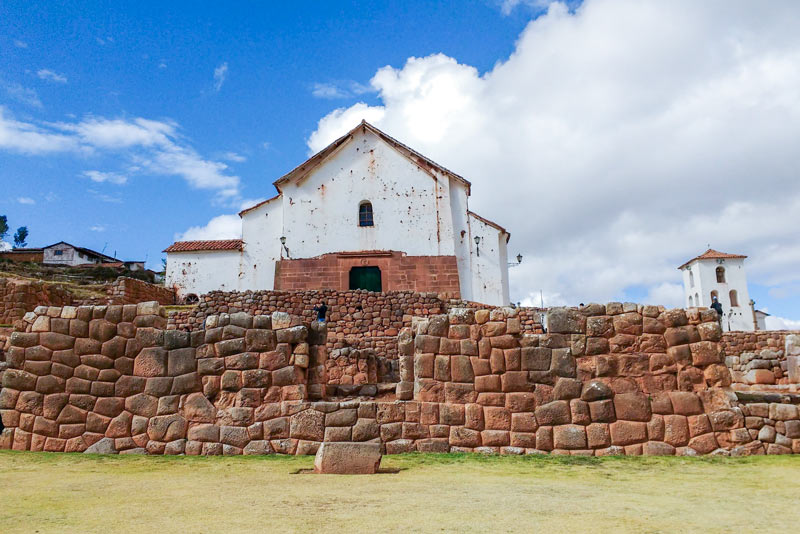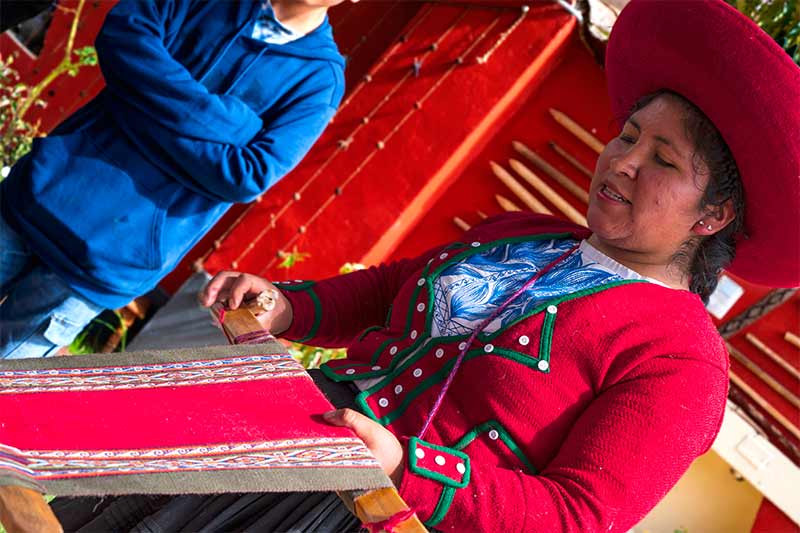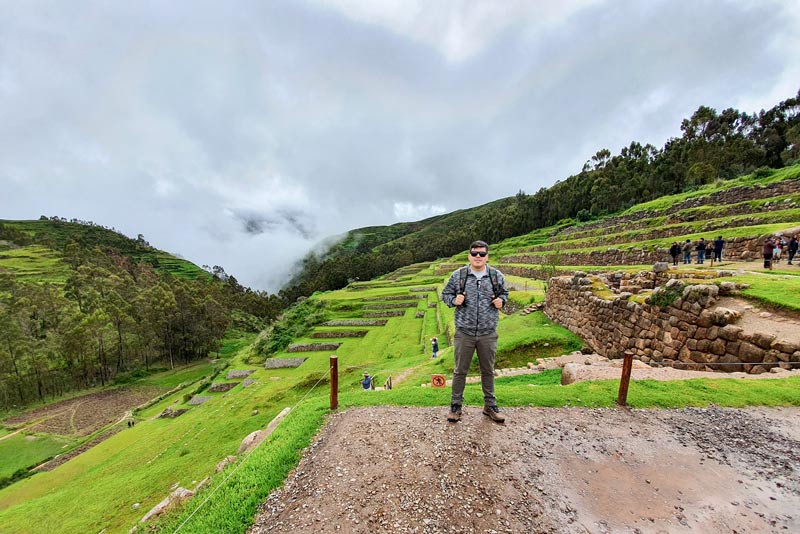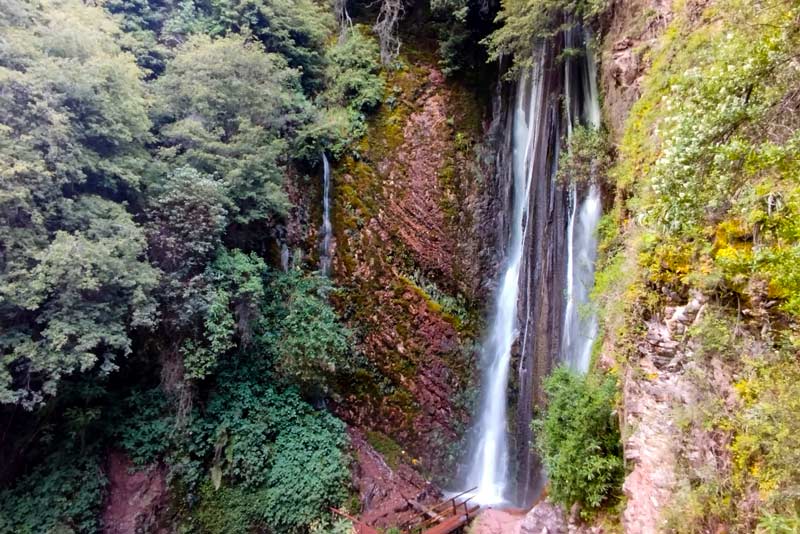Guide to visit Chinchero before the arrival of the new international airport
If you’re planning your trip to Cusco, this is the perfect time to visit Chinchero, as it will soon become the epicenter of mass tourism. Peru’s new international airport will be built in Chinchero, so millions of tourists are expected to visit this incredible town very soon. In this article, we’ll tell you what to do, how to get there, and why you should visit now, when it still retains its most traditional essence.
- Where is Chinchero?
- What to do in Chinchero?
- Why visit Chinchero now?
- Tips for visiting Chinchero
- Frequently Asked Questions
Where is Chinchero?
The town of Chinchero is located 30 kilometers from the city of Cusco in the province of Urubamba and is one of the must-see destinations in the Sacred Valley. Reaching Chinchero by car takes about 1 hour and 30 minutes, and throughout the journey you’ll see impressive agricultural landscapes, as well as numerous mountains, snow-capped mountains, and valleys.
To get to Chinchero and enjoy an immersive tour, you can choose to visit it on the classic Sacred Valley tour. This experience allows you to visit its main archaeological site and also enter one of its community textile workshops, where you will learn a lot about their weaving techniques. You can also buy a souvenir to make your visit unforgettable.
The VIP Tour to the Sacred Valley of the Incas
If you’ve decided to travel to Chinchero and want the best tour available, the VIP experience to the Sacred Valley will allow you not only to visit the magical town of Chinchero, but also to visit Pisac, Ollantaytambo, Maras, and Moray. This tour includes full transportation, guided tours, admission to each archaeological site, and a buffet lunch in Urubamba. It’s a full-day experience where you’ll get to know the best of the Sacred Valley of the Incas.
What to do in Chinchero?
Chinchero is one of the most beautiful towns in the Sacred Valley, where you can find a wide variety of activities that will allow you to learn more about its culture and its attractions, both natural and archaeological. Discover the most outstanding activities and schedule them for your visit to Chinchero.
Archaeological site of Chinchero
The town of Chinchero boasts a rich cultural heritage thanks to the Killke and Inca cultures, who inhabited this territory, later ruled by the Spanish. Within its main archaeological site, we’ll find pre-Hispanic roads, large enclosures, terraces, water channels, huacas (sacred sites), shrines, and large stone gateways.
The Chinchero archaeological site is divided into two sectors: the urban side, notable for its residential and ceremonial habitations; and the agricultural side, comprised of terraces or platforms.
Tupac Yupanqui Palace
Chinchero is a town where Inca and colonial architecture merge in most of its notable buildings , adding great beauty to our visit. Among the highlights is the palace of Tupac Yupanqui, or what remains of it, since the temple of Our Lady of Montserrat was built on top of this palace, later renamed Our Lady of the Nativity.
From the remains of Túpac Yupanqui’s palace, we can still glimpse its foundations and a large wall with ten niches. In the current temple, we can find great examples of religious art, such as paintings, sculptures, altarpieces, and altars. Furthermore, it is located just a few steps from the Chinchero archaeological site, which enriches the tour.
Community textile workshops
Within Chinchero’s intangible heritage, we can delve into its community textile workshops, where the people involved preserve ancestral traditions passed down from generation to generation. Within the workshops, we learn how the women of Chinchero dye their textiles with natural elements. Demonstrations are given and weaving techniques are explained.
The textile art of Chinchero is a work that tells stories through its colors and engravings . All pieces are displayed in its workshops, where we can learn about each of its designs and purchase an authentic, high-quality garment that symbolizes Chinchero’s cultural identity. Remember that buying souvenirs in Chinchero’s textile workshops supports its economy and contributes to preserving its traditions.
Walks
To experience Chinchero’s nature and culture more directly, there are hikes that will take us to discover more of its biodiversity. Popular routes include the one that takes us to the Urquillos Valley, where we’ll discover cobblestone paths, terraces, and breathtaking landscapes. Another option is to head to Taucca and begin the hike that leads to Huchuy Qosqo along Inca trails.
Near Chinchero, there are many natural viewpoints, such as the Inca’s Balcony, from where we can appreciate the immensity of the Sacred Valley and the reasons why it was, and continues to be, such an important and beautiful place.
Natural attractions
Some hikes can take us to its natural attractions, but there is also the option of visiting them by public transportation. Among Chinchero’s main natural attractions is the Poc Poc waterfall , which requires a slight hike but offers a beautiful waterfall alongside some archaeological remains.
Another option is to visit the Piuray and Huaypo lagoons, which are surrounded by the famous Verónica, Salkantay, and Soray snow-capped mountains. A visit is an opportunity to learn more about Chinchero’s flora and fauna, which is notable for its aquatic birds, migratory birds, and endemic species such as the torrent duck and the silver grebe.
Let us remember that the snow-capped mountains or mountains are considered “Apus”, which has an Andean cultural significance as they are protective spirits, which provide shelter, protection and fertility to the towns and the land to which they belong.
Why visit Chinchero now?
Chinchero will be the epicenter of tourism, as it will host Peru’s new international airport, which could mean a significant change in the landscape we encounter, as well as the town’s cultural dynamics. Projections call for many more hotels, businesses, and traffic in the coming years.
The airport is planned for completion in 2026-2027, so you still have time to explore it at your leisure, learning more about its traditions on immersive tours. Chinchero’s vast biodiversity offers an opportunity to engage in all kinds of outdoor activities, and you’ll also learn more about its ancestral culture, making it a magical place you can’t miss.
In addition, from Chinchero you can head to any of the attractions that the Cusco region has to offer. Being a central point, you can combine your visit with destinations such as Ollantaytambo, Machu Picchu, Pisac, and many other places.
| Characteristics of Chinchero | |
|---|---|
| Category | Detail |
| Location | 30 kilometers from Cusco (approximately 1 hour and 30 minutes). |
| Altitude | 3,762 meters above sea level. |
| Main attractions | Archaeological site, colonial church, platforms, craft market, textile workshops and natural sites. |
| Climate | Temperate, though cold, climate. There are sunny days and cold nights. |
| Access from Cusco | Public transport (buses heading towards Urubamba), taxis and organized tours. |
| Responsible tourism | Direct purchases from artisans, experiential and ecological tourism. |
| Future change | Construction of the new international airport, high tourist flow. |
Tips for visiting Chinchero
If you decided to visit Chinchero before mass tourism took over, we’ll give you the best tips and recommendations to help enrich your visit. And you’ll be better informed when you do. Discover them:
- The trip from Cusco to the town of Chinchero takes approximately 1 hour and 30 minutes, although you’ll be surrounded by incredible landscapes throughout.
- Chinchero is a place where culture is present in every corner. During your visit, you will visit a traditional village where you will learn much more about the Andean worldview.
- Chinchero is 3,792 meters above sea level, so you will need to acclimatize before visiting to avoid altitude sickness.
- Towns like Yucay, Arín, and Urubamba are ideal for acclimatizing during your first few days of travel to Cusco. These places will provide you with lower altitudes and a temperate climate.
- If you’re visiting Chinchero during the rainy season (November – March), be prepared with waterproof clothing or a rain poncho, as it can rain at any time.
- Chinchero has clearer weather during the dry season (April to October), although it is much colder, so you should always wear warm clothing when visiting.
- Take advantage of Chinchero’s natural geography to take a break from your trip to Cusco, where you’ll find landscapes brimming with biodiversity.
- Chinchero International Airport is planned for 2026-2027, so you still have time to visit it more authentically on leisurely tours.
- Pachamama, or Mother Earth, is very important to Andean culture. Thanking her for your experience or maintaining a sense of reciprocity and care for nature will give greater meaning to your experience in Cusco.
- Remember that you can book your trip to Chinchero along with Boletomachupicchu. Ask our advisors about all the options available for a great experience in Cusco.
Frequently Asked Questions
1) Where is Chinchero?
Chinchero is located about 30 kilometers from the city of Cusco, in the province of Urubamba. The trip takes approximately 1 hour and 30 minutes, and along the way you’ll see incredible landscapes of valleys, mountains, and agricultural fields.
2) How high is Chinchero?
Chinchero is located at 3,762 meters above sea level, so it’s essential to acclimatize before visiting. Ideally, spend a day or two in lower elevations, such as Urubamba or Yucay.
3) Is it worth visiting Chinchero before the airport is built?
This is definitely the ideal time to experience Chinchero in its authentic state, before mass tourism alters its pace and landscapes.
4) What can I see at the Chinchero archaeological site?
At the Chinchero archaeological site, you’ll find terraces, Inca roads, water channels, and remains of ceremonial enclosures. All surrounded by a verdant landscape and agricultural areas.
5) What is the Tupac Yupanqui Palace like?
Although only the foundations of the original palace remain, the site remains fascinating. The colonial temple of Our Lady of the Nativity was built on top of this ancient Inca residence, where you can see religious art in paintings, altarpieces, and sculptures.
6) What is the experience like in the Chinchero textile workshops?
The community textile workshops in Chinchero are a living experience of Andean traditions. There, you’ll learn how the women of Chinchero dye wool with natural products and weave pieces with prints that tell stories—an educational and cultural experience.
7) What hikes can I do from Chinchero?
One of the best-known routes runs from Chinchero to the Urquillos Valley, offering spectacular views. Another recommended route is to Huchuy Qosqo from Taucca, a hike that follows ancient Inca trails.
8) What natural places can I visit near Chinchero?
You can visit the Poc Poc waterfall, a place where you’ll see a wealth of nature and some archaeological remains. You can also visit the Piuray and Huaypo lagoons, surrounded by a wealth of biodiversity.
9) How do I support responsible tourism in Chinchero?
Buy directly from artisans, participate in local workshops, and minimize your environmental impact.
10) What will happen to Chinchero when the new airport is built?
Chinchero International Airport is planned for 2026 or 2027 and is expected to completely transform the area. A significant increase in tourist flow, hotel infrastructure, and businesses are anticipated, which could change the essence of the town. So, if you want to experience authentic Chinchero, now is the best time.
Advice from people who have been there
 By: Christian N.
By: Christian N.“Ideal for a quiet morning“
“I went in the morning from Cusco and it was totally worth it. It is a quiet place, with a good view and a lot of history. What I liked most was the market and the textile workshops, where they explain the whole process. I recommend taking some cash, because not everyone accepts credit cards. It is also better to go with a tour so you don't miss anything.“
By Ticket Machu Picchu – Last updated, July 14, 2025
